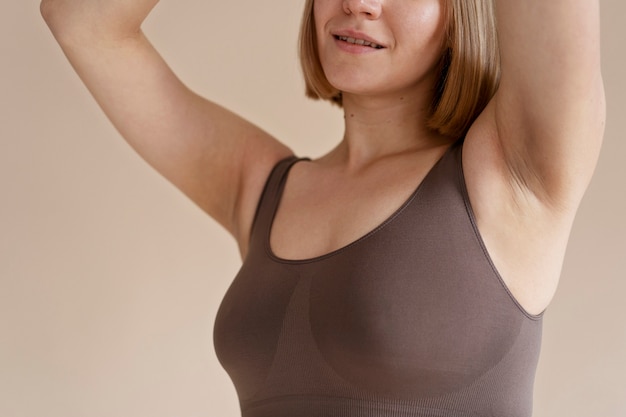How Breast Reduction Surgery Can Improve Posture
Breast Reduction in Abu Dhabi medically known as reduction mammoplasty, is a transformative procedure that not only enhances physical appearance but also provides numerous health benefits. For many women, particularly those with larger breast sizes, excessive breast weight can lead to a variety of issues, including back pain, neck pain, and poor posture. In Abu Dhabi, where the demand for cosmetic and reconstructive surgeries is on the rise, understanding how breast reduction can improve posture is essential for potential candidates. This article will explore the relationship between breast size, posture, and the benefits of reduction surgery, while also addressing key considerations for those contemplating the procedure.
1. Understanding Breast Reduction Surgery
Breast reduction surgery involves the removal of excess breast tissue, fat, and skin to achieve a breast size in proportion with the body. The procedure not only focuses on aesthetic outcomes but also aims to alleviate physical discomfort associated with oversized breasts.
1.1 Why Do Women Seek Breast Reduction?
Women often seek breast reduction surgery for various reasons, including:
- Physical Discomfort: Large breasts can cause chronic pain in the back, neck, and shoulders.
- Skin Irritation: Rashes and skin irritation under the breasts are common issues faced by women with larger breasts.
- Limitations in Physical Activity: Larger breasts can hinder participation in physical activities and sports, impacting overall fitness.

2. The Impact of Breast Size on Posture
Breast size significantly influences posture. Women with larger breasts often develop poor posture due to the weight pulling the shoulders forward and down. This can lead to:
- Rounded Shoulders: A common result of compensating for breast weight.
- Forward Head Posture: Increased forward positioning of the head, leading to neck strain.
- Increased Lumbar Curve: Excess weight can create an exaggerated curvature in the lower back, resulting in discomfort.
2.1 The Biomechanics of Posture
Our body’s biomechanics play a crucial role in maintaining good posture. The center of gravity shifts with increased breast weight, forcing the body to adapt by altering its alignment. Over time, these adaptations can lead to chronic pain and discomfort.
3. How Breast Reduction Surgery Improves Posture
3.1 Restoration of Balance
By reducing breast size, the surgery helps restore the body’s natural balance. This shift allows the shoulders to align more appropriately with the hips, promoting an upright posture. Patients often report feeling more comfortable standing and sitting after the procedure.
3.2 Alleviation of Pain
Many women experience relief from chronic pain conditions post-surgery. With less weight on the chest, the strain on the back, neck, and shoulders is significantly reduced. This alleviation can lead to more awareness of posture and body alignment.
3.3 Enhanced Body Awareness
Post-surgery, individuals tend to develop a better understanding of their body mechanics. This heightened awareness often encourages healthier posture habits, reducing the likelihood of reverting to old patterns.
4. The Psychological Benefits of Improved Posture
Improved posture not only benefits physical health but also contributes to psychological well-being. When individuals stand taller and align their bodies correctly, they may experience:
- Increased Confidence: A better posture often translates to improved self-esteem and body image.
- Positive Social Perception: Good posture is often associated with confidence, influencing how others perceive us.
5. Preparing for Breast Reduction Surgery in Abu Dhabi
5.1 Consultation Process
Before undergoing breast reduction surgery, it is essential to have a comprehensive consultation with a qualified plastic surgeon. This process typically involves:
- Medical History Review: The surgeon will assess your medical history to identify any potential risk factors.
- Physical Examination: A physical assessment helps determine the appropriate surgical technique.
- Discussion of Goals: Understanding your motivations and desired outcomes is crucial for aligning expectations.
5.2 Pre-Operative Preparations
Preparing for the surgery includes:
- Lifestyle Adjustments: Patients may be advised to stop smoking and avoid certain medications that can increase bleeding.
- Nutritional Considerations: Maintaining a balanced diet promotes better healing post-surgery.
6. What to Expect During and After Surgery
6.1 The Surgical Procedure
Breast reduction surgery is typically performed under general anesthesia. The surgeon will make incisions based on the technique chosen (such as anchor or vertical incision) to remove excess tissue and reshape the breasts.
6.2 Recovery Process
Post-operative recovery involves:
- Initial Healing: Expect swelling and bruising, which will gradually subside.
- Activity Limitations: Patients are usually advised to limit physical activities for a few weeks to allow proper healing.
- Follow-Up Appointments: Regular follow-ups with the surgeon ensure optimal recovery and address any concerns.
7. Long-Term Results and Maintenance
7.1 Sustaining Good Posture
To maintain the benefits of improved posture after breast reduction, individuals should focus on:
- Strengthening Exercises: Incorporating exercises that strengthen the back and core muscles supports good posture.
- Mindful Awareness: Being conscious of body alignment throughout daily activities can prevent slouching or poor posture.
7.2 Routine Check-Ups
Regular check-ups with healthcare professionals can help monitor any changes and ensure continued well-being.
8. Conclusion
Breast reduction surgery offers significant benefits for women in Abu Dhabi, particularly in improving posture and alleviating associated discomfort. By understanding the relationship between breast size and posture, individuals can make informed decisions about their health and well-being. With the potential for enhanced physical and psychological benefits, this procedure can be a life-changing solution for many women.
FAQs
1. How much weight is typically removed during breast reduction surgery?
The amount of tissue removed varies by individual, but it can range from a few hundred grams to several kilograms, depending on the desired outcome.
2. Will I have visible scars after the surgery?
Yes, scarring is a part of the procedure, but skilled surgeons employ techniques to minimize the visibility of scars.
3. How long does the recovery process take?
While recovery varies, most individuals can return to normal activities within 4-6 weeks, although complete healing may take several months.
4. Can breast reduction surgery affect breastfeeding?
Breast reduction can impact future breastfeeding, so it’s important to discuss this with your surgeon if you plan to have children.
5. Is breast reduction covered by health insurance?
In some cases, breast reduction surgery may be covered by health insurance, especially if it is deemed medically necessary. Always check with your provider for specific coverage details.

